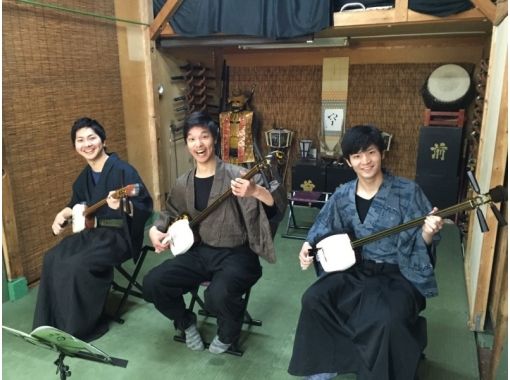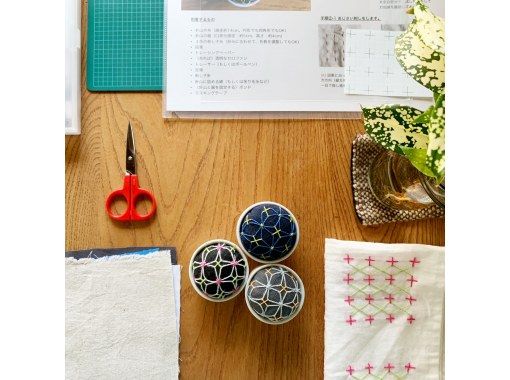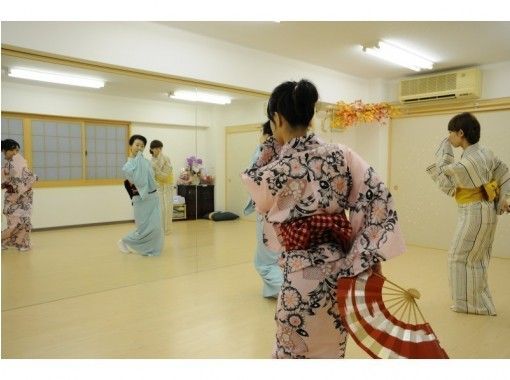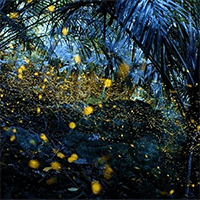Tokyo Reservation for Hobby / Cultural experience | Activity Japan
Tea ceremony, calligraphy, bonsai, such as traditional culture from Japan ancient times the mind of Japan's sum is felt. Such Japanese culture to experience, what is more deeply plan that it is possible to know about Japan how. Here, enjoy in Tokyo, will introduce the plan of Japanese traditional cultural experience. Dressed in yukata and kimono, it will be memories of also a good trip for exploring the Asakusa of the city. Kimono can facilities, not only the Asakusa in Tokyo, Ginza and Shinjuku, such as Harajuku, located in various places. In addition, and tourist guide to learn about the culture and history, can also be attached to choose a guide who can speak English, many facilities that foreigners can participate willingly, are popular. During the photo commemorative photo in the studio and tourist spots also where you can put in the option. In addition, and plans to tour the function, performing a beautiful motifs to glass, is the classroom also recommended that can experience of Edo Kiriko making. How to participate in the plan, you will need in advance of subscription. For more information, such as price and implementation date and time on the reference to the introductory article of each page, please contact us.
- Age 15~Age 100
- 1~2 hours
- 10:30 / 11:00 / 11:30 / 12:00 / 12:30 / 13:00 / 13:30 / 14:00 / 14:30 / 15:00 / 15:30 / 16:00 / 16:30 / 17:00
There was a time when fabric and garment were very precious and hard to get. People who lived in north part of Japan needed to repair or mend for their garment and make protect from cold season. They stitched several layers of cloth carefully stitch by stitch. Sashiko is a technique that was born from this and nowadays become one of traditional handicraft which was born from taking good care of things and the wisdom of life. At that time, there were no schools, and Sashiko was passed down from parent to child. Therefore, there is not just one technique, but multiple techniques. The repair method is the same. Here we would like to introduce some of the sashiko mending and darning techniques. Please use it for various purposes such as repairing precious clothes, making use of leftover cloth, and making art. You can take the coaster away. Please enjoy the stitching!!
- Age 5~Age 94
- 1~2 hours
- 09:00 / 10:30 / 13:30 / 14:00 / 15:00 / 18:30 / 19:30
This plan is conducted in Japanese by a Japanese taiko instructor and includes an English translation guide. Wadaiko is a traditional Japanese culture that has been around for over 5,000 years, with close ties to samurai, kabuki, festivals, sumo, and more. It can be enjoyed by people of all ages, genders, nationalities, and even those with no prior experience playing an instrument. It combines elements of sport and brain training, and is used at shrines and temples as an instrument that is inhabited by gods, to ward off evil and pray for happiness, making it a perfect gift or celebration. (*Venue fees may be charged separately depending on the date, time, and number of people, so please check at the time of booking.)
Had lots of fun playing with two types of taiko drum and different rhythms. Enjoy the performance from the teacher. The teacher and translator are both great and helpful!
- Age 9~Age 85
- 1~2 hours
- 10:00 / 13:30 / 15:00 / 18:00 / 19:30
We perform and inherit activities in the field of Japanese drum and shamisen music and art with the aim of contributing to society. Tokyo Enjoy sightseeing, family, lovers, friends, group company company training, school school trip memories, and Japanese traditional culture. Please feel free to join us ♪
三味線初心者だったので講師の先生ももどかしく感じられたと思いますが、懇切丁寧に教えてくれたので最後まで楽しく学ぶことができました。 三味線の歴史を教えてくれたり、じょんがら節を演奏してくれたりと、弾き方を学ぶ以外の面でもとても楽しかったです。
- Age 16~Age 99
- 2~3 hours
- 10:00 / 13:00 / 16:00 / 19:00
Once your reservation is confirmed, we will send you an email, so please make sure to check it. If you would like to participate with more than 6 people, please let us know. We can accommodate up to 10 people. In this lesson, you can experience Iai, Gekken (Kendo), and Nattou (test cutting). These three are collectively called Kenjutsu. Iai is how to handle a sword, Gekken is how to learn the distance between you and your opponent and how to attack and defend, and Nattou is how to cut. - Schedule: Time varies depending on the number of people - 1. Demonstration (3 minutes) 2. Lecture on swords (20 minutes) 3. Change into practice clothes (10 minutes) 4. Iai lesson (20 minutes) 5. Gekken lesson (20 minutes) 6. Test cutting (20 minutes) 7. Certificate of inka (5 minutes) 8. Change into casual clothes (10 minutes)
It's 100% worth the money and not a tourist trap. The instructor, Sumida Sensei, was very patient and carefully taught me how to handle a katana. In the end, the improvement was visible. I started as a newbie, and at the end of the class, I was able to cut a tatami mat, bringing me a great sense of achievement. Really is worth a try!
- Age 15~Age 100
- 1~2 hours
- 10:30 / 11:00 / 11:30 / 12:00 / 12:30 / 13:00 / 13:30 / 14:00 / 14:30 / 15:00 / 15:30 / 16:00 / 16:30 / 17:00
Sashiko is like Japanese embroidery. You have experience to make Sashiko needle mountain. The patten is "Hydrangea" pattern. It's a traditional Japanese pattern. === What you experience === Step 1: Choose a fabric and a thread color. Step 2: Transfer pattern on fabric. Step 3: Do Sashiko stitching. Step 4: Make needle mountain. Completed!! ========== You can take the needle mountain away. Please enjoy the stitching with it!!
I had a great time doing this sashiko workshop. Keiko was very kind and explained how to do things very well. It may be more difficult if you don't have any prior experience with hand sewing but it is still doable with some patience and concentration. We did not finish the project but were given instructions on how to finish the piece. You learn all the skills you will need in the time allotted. The shop was easy to find using the instructions given on the canoha website.
- Age 7~Age 80
- 1~2 hours
- 00:00 / 10:30 / 13:30 / 15:00 / 17:45 / 19:00
We offer Shinobue experiences for 1 to 100 people, from 7 to 80 years old, all over the world.・You can enjoy it according to your style, such as families, couples, couples, friends, etc. ・You can use it in conjunction with sightseeing in Tokyo such as Ueno, Asakusa, Sky Tree, Akihabara, etc. ・Perfect for corporate training programs and teambuilding! !・Schools Can also be used as teaching materials for extracurricular learning at educational institutions and traditional Japanese culture experience programs. - Shinobue is especially popular among Japanese people because it is easy to take home, but the Shinobue is lightweight and can fit into an A4 size bag, making it a great choice as a souvenir! ! Please also use it for inbound foreigners!!
私は物作り業界に20年近く従事してるので、単純に篠笛が貰えるのにテンションあがって体験申し込みしました(笑)難しいと言われるものほど、挑戦したくなるもので。基本の所作、吹き方…何度もつまずいて同じところに一緒に戻ってくれて音を聞きながら試すのはボイトレやお芝居の時も得意な方なので、初めてで難しかったけど短時間でこんなにできるんだ!と感動し。吹き方一つで、音の使い分けできるのも興味深く面白かったです♪ひそかに褒められたい、と思って体験しにいったので。低いドがキレイにでましたねと言って貰えて最高に嬉しかったです。既存曲だけじゃなく、オリジナルの曲も吹けるように楽しんで練習していきたいなと思います。
- Age 6~Age 99
- 2~3 hours
- 10:30 / 13:30
Transform into a skilled artisan donning the same white costume as an Itamae (sushi chef)! Your first job as an Itamae is to prepare your own wasabi for use in sushi. Be careful, or your tears won't stop flowing.The next step is to prepare sushi nigiri. First, you will practice making the rice. The way you grip the rice makes all the difference in taste. If you can do this, you are 50% of the way to being a chef. Once you can make the rice, let's put some ingredients on top of the rice! You will complete 8 different sushi combos including Japanese tuna, salmon, Edomae conger eel, seared wagyu beef, and hand rolls. Compare and contrast the sushi you have tasted so far with the sushi you have made yourself! If your sushi tastes better, you are welcome to make your debut as an Itamae (chef) at our restaurant!If just experiencing the sushi is not enough for you, we can also attach a A GoPro will be used to capture a realistic and authentic video of your experience as a sushi chef. After the meal, you can also freely enter the counter and take a commemorative photo. You will be able to take home memories that you can only have here. Sake tasting is also available as an option. You can taste Itamae Sushi's original sake, etc.
- Age 6~Age 75
- 1~2 hours
- 10:00
The most popular Japanese food is the Edo-style handful. Professional craftsmen will guide you in making hand-grips using seasonal fish and vegetables. “Sushi” experience is one of the purposes of traveling in Japan. There are delicious famous sushi restaurants and easy-to-eat sushi restaurants adult Would you like to hold sushi at Kujo Tokyo? What is a famous store Year A sushi chef who has also trained will carefully guide you in making sushi. How about dinner with sushi you grabbed by yourself? It will be an unforgettable memory of your trip to Japan. You can enjoy not only fresh seafood but also vegetable sushi. [Experience] Holding sushi [Meals] Nigiri sushi, soup or miso soup
- Age 20~Age 75
- 2~3 hours
- 11:30
① Learn about sake brewing. Learn about the history of sake and the differences in how it is made. ② Drink and compare three types of sake: sweet, medium-dry, and dry. Enjoy seasonal mini-sized dishes. ③Try new sake cocktails and more. Try new ways to enjoy sake, such as cocktails based on sake ④ Lunch Finally, for lunch, try sake lees-based ``keema curry'' or ``mapo tofu bowl.'' Approximately 2 hours lunch time Please apply for 2 or more people. Due to the arrangement of ingredients (fish), cancellations cannot be made from 4 days in advance.
- Age 7~Age 75
- 1~2 hours
- 10:30
A new basic cooking experience course is born! The basis of Japanese cuisine is dashi, which is made from kelp and bonito flakes. You can use dashi to bake dashimaki eggs or make chawan mushi. After making the soup stock, the bonito flakes and kelp can also be used as ingredients for rice balls. After making the dashi and cooking it, enjoy your lunch with miso soup made with the freshly made dashi. Vegan options are also available. Please contact us. Operated by 2 or more participants.
- Age 6~
- 1~2 hours
- 13:30
After practicing the “food” character with basic calligraphy such as dots, stops, and payments, select the character you want to write. After receiving the certificate of completion, you can enjoy special organically grown tea and seasonal Japanese sweets and water sweets. Feel free to experience calligraphy. After practicing basic characters, write your favorite characters and your name. You can learn the difference between 硯, sumi, and brush, and know the origin of kanji and hiragana. After practice, you can enjoy Japanese sweets and fruits that love the season.
- Age 6~
- 1~2 hours
- 13:30
After having your teacher make a traditional tea ceremony in the tea room, move to the counter seat and make your own tea. After that, you will have seasonal Japanese sweets and fruits. The tea ceremony is not only a place to drink tea, but also an opportunity to experience traditional Japanese culture. After enjoying the teacher's tea according to the manner, try making your own tea. [Experience contents] After having a dried confectionery, you will have a cup of tea made by the teacher. Basically a regular customer less Up to 4 people will sit in the tearoom. First-come, first-served basis That more Customers can also experience tea made by another teacher. [More experience] Try making your own tea! Teaching by the teacher and making tea yourself
- Age 6~
- 1~2 hours
- 10:00
Challenge vegan cuisine that is rapidly gaining popularity overseas. Let's make ramen and dumplings. Like Kujo Tokyo, I am particular about the ingredients. The most popular thing that foreign tourists want to eat when they come to Japan is ramen. But for those who want a little bit of animal fat ramen or vegan dishes. Ramen and dumplings are made with vegans that have recently attracted attention for their health, beauty and lifestyle. Can you make really delicious ramen with vegans that do not use eggs, dairy products, or honey, as well as meat and fish? If you drink a bite of soup, the question disappears. You can also enjoy making gyoza. [Experience content] It is you to decide the taste of miso ramen by mixing 3 types of miso and leek oil [Meals] Vegan Miso Ramen, Organic Green Tea
- Age 6~
- 1~2 hours
- 10:00 / 15:30
Look back and enjoy the history of sushi while making colorful and colorful sushi. adult Ki Nigiri Sushi was born in the Edo period and is a fast food for the impatient Edo kid. Before that, sushi was "push paper" or rose paper (flyer paper). Even now across Japan There are still a variety of push-buttons. You will experience the creation of a vivid push-push. You can also enjoy seasonal vegetable dishes and miso soup made from shrimp heads. [Experience content] We will challenge to make a push. [Meals] Oshizushi, miso soup, seasonal vegetable dishes, pickles
- Age 7~Age 75
- 2~3 hours
- 10:00 / 15:30
The basis of food is “soybean”. Tofu is made from squeezed soymilk after mashing and boiling soybeans. A lot of nutrition remains in the pomace that squeezes plenty of soy beans. Japanese people do not mix fried okara with soup stock and eat tofu as it is, fry it up, make it deep fried, freeze it tofu, etc. I ate protein every day as a soy dish. For Japanese people, miso soup using miso made from soybeans, and cold sushi and tofu dishes with soy sauce made from soybeans are the basic home cooking that is essential. It is a course where you can enjoy the basics of Japanese cuisine by making tofu that can be said to be a synonym for Japanese cuisine and tasting a variety of processed soybean dishes.
- Age 6~Age 100
- 1~2 hours
- 11:00 / 15:00 / 18:00
It is a trial plan that you can easily try pottery in about 2 hours. The instructor will advise you on what you need, so first try to make what you want to make freely. If you wish, you can also experience the electric potter's wheel (1,500 yen separately). Children can participate if they are elementary school students more so both adult and children can enjoy. * It takes about one month to one and a half months to complete the work.
- Age 3~Age 90
- 2~3 hours
- 11:00
In Japan, we eat sushi rolls on special occasions such as celebrations and festivals. It looks beautiful and has an excellent nutritional balance, making it one of Japan's hospitality dishes. Let's make such traditional sushi rolls together! In addition, you can also learn recipes for miso soup and chawanmushi. Lectures will be given in English, so please do not worry if you are not comfortable with Japanese. It's very easy once you get the hang of it! Everyone from children to adults can enjoy it. We are looking forward to seeing you all. Venue: The event will be held at a cooking studio near Shinjuku, Chiyoda, and Minato Ward. We will contact you about the location after booking. Menu: ・How to make soup stock ・Maki sushi ・Chawanmushi ・Miso soup ・Dessert (white sesame pudding)
アメリカ人の友達と2人で参加しました。英語が堪能なインストラクタ-さんで、和やかに楽しく料理をつくることができました。日本人の私は自宅で茶碗蒸しや、本格的な巻きずしを作ったことがありませんが、こうして作るんだ!と非常に参考になりました。出汁をとるところから始まり、興味深々な外国人の友達と私も勉強になりました。3連休でインストラクタ-の方を調整頂くことに大変だったとは思いますが、本当にこちらでお世話になって良かったです。皆さん、是非おススメです!!!
- Age 6~
- 1~2 hours
- 09:00 / 10:00 / 11:00 / 13:00 / 14:00 / 15:00
Let's wear a yukata and experience authentic Japanese traditional dance in Asakusa, a district of Tokyo which is the hub of arts! Yoko Namishima - a teacher with over 30 years of experience gives instructions with joy and great attention to each learner. In case of 2 or more participants, she performs a nihonbuyo-dance after the lesson! We are delighted to have everyone from beginners to even those who find hard to wear yukata! Feel free to join us! 【Namishima Yoko Nihon Buyo Class】 ・You can learn about the spirit of harmony and hospitality through the nihonbuyo-dance. ・By easy-to-understand instructions you can learn dancing with an easy mind. ・Lesson held in a perfect environment: a 3-minute walk from the main station and Asakusa district which is the hub of arts. ・Professional instructions are provided by Namishima teacher from traditional and contemporary dances to yukata dressing. Japanese traditional dance "nihon-buyo" is a part of "kabuki" called "shosa-mono" which means movement. Yoko Namishima left Nihon-buyo school and created her own stage performance, and became a representative of「Shin-buyo」which is a new style of dancing. Her concept is to promote the Japanese spirit of harmony and hospitality through the dance and she is involved as an instructor of dancing, sword battling and kimono dressing in performances held all over the country and across the world .
最近チェックしたプラン
Please wait a moment
![[Tokyo, Ogikubo] Sashiko visible mending / darning / embroideryの画像](https://img.activityjapan.com/10/57928/10000005792801_3mqiyZ2h_3.jpg?version=1740133144)
![[Tokyo/Asakusa/Ueno/Skytree/Meiji Jingu/Akihabara area] We welcome groups of up to 200 people to experience Japanese traditional culture!の画像](https://img.activityjapan.com/10/18998/10000001899801_dkUvLGqU_3.jpeg?version=1727742482)

![[Tokyo] Comprehensive course of 3 types of swordsmanship at a real dojo (Iaido, Gekiken, Trial cutting)---My class is not a tourist trapの画像](https://img.activityjapan.com/10/24021/10000002402101_yjBJELjJ_3.JPG?version=1657272185)

![[Tokyo/Asakusa/Skytree/Ryogoku area] Get a Shinobue gift! Shinobue experience♬の画像](https://img.activityjapan.com/10/29582/10000002958201_SMxgIMFr_3.jpg?version=1705275663)
![[Tokyo] Professional Sushi Chef Experience in Tokyoの画像](https://img.activityjapan.com/10/55110/10000005511001_Q41HjcFR_3.webp?version=1719804794)
![[Taito-ku, Tokyo] Make the popular "nigiri sushi"! Authentic nigiri sushi experience! Vegan-friendly too!の画像](https://img.activityjapan.com/10/26999/10000002699901_GhwGsT3M_3.jpg?version=1569917549)
![[Taito Ward, Tokyo] Learn about sake!の画像](https://img.activityjapan.com/10/50672/10000005067201_atFOJjl6_3.webp?version=1694481607)
![[Taito-ku, Tokyo] The basics of Japanese food is “dashi” ~ Dashi making ~の画像](https://img.activityjapan.com/10/50671/10000005067101_atFOJjl6_3.webp?version=1694481066)
![[Tokyo ・ Taito Ward] A calligraphy experience filled with the basics of calligraphy! A break with organically grown tea & seasonal sweetsの画像](https://img.activityjapan.com/10/27061/10000002706101_Oo1eOgGf_3.webp?version=1568341887)
![[Tokyo ・ Taito Ward] Feel free to experience the tea ceremony-you can also learn traditional works in the tea roomの画像](https://img.activityjapan.com/10/27059/10000002705901_Oo1eOgGf_3.webp?version=1569917488)
![[Tokyo ・ Taito-ku] Vegan and healthy ramen & dumpling making experience that attracts attentionの画像](https://img.activityjapan.com/10/27058/10000002705801_Oo1eOgGf_3.jpg?version=1570699421)
![[Tokyo ・ Taito-ku] It is a challenge to make "pushed sushi" that looks vividの画像](https://img.activityjapan.com/10/26993/10000002699301_GhwGsT3M_3.jpeg?version=1569917522)
![[Tokyo ・ Taito Ward] Basic of Japanese food! Japanese food culture experience of "tofu making and soy dishes"の画像](https://img.activityjapan.com/10/26992/10000002699201_GhwGsT3M_3.jpeg?version=1614852306)
![[Tokyo/ Toshima Ward] Challenge pottery in a cozy atelier near Otsuka Station! Enjoy from elementary school!の画像](https://img.activityjapan.com/10/12334/10000001233401_zTgh594M_3.jpg?version=1571893612)
![[Tokyo] Experience making sushi rolls and side dishesの画像](https://img.activityjapan.com/10/49784/10000004978401_hjJ3Jm89_3.jpg?version=1743139143)








